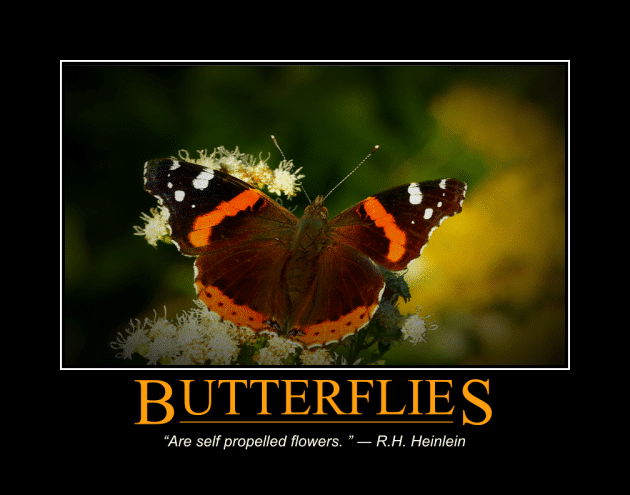While roaming the tallgrass prairies near my home in Eastern Iowa, I often encounter butterflies. They’ve been described as flying flowers and they never fail to delight me whenever I see them.
Whenever I have the opportunity I will always try to film butterflies.
Probably the best time to film butterflies is in the cool mornings right after sunrise. Butterflies must warm themselves up before they take off on their first flight of the day.
Butterflies the Beautiful Insects
by Brian Neil
The colorful insects of butterflies are widely distributed in nature. They have four stages in their life cycles. The egg, the larva, the pupa and the adult are the four. Very often, they are useful insects as they help pollinate flowers of some plants. However, larvae of some species of these insects damage crops by feeding on them. Most butterflies have colorful wings and their flight is fluttering. Some of them migrate long distances.
The butterfly eggs are laid on the underside of leaves and they are covered with strong shells. The shell is again covered with a layer of wax to protect the eggs from drying out. The eggs are glued on to the leaf with glue. Different butter fly species use different plants to lay eggs. Normally, the eggs hatch after a few weeks. However, in temperate regions the eggs laid close to winter will only hatch during spring.
When the eggs of butterflies hatch, the larvae emerge. It spends its entire life time looking for food. Normally, it will eat the plant on which the eggs are laid. In the life of a caterpillar there are stages called instars. At the end of each stage the caterpillar will shed its outer skin like layer. The wings will develop at the last stage. Before that it will develop three pairs of legs.
At the last stages of the larva, the wings are visible from the outside. When the larva comes to this stage it will stop feeding and will go in search of a place to spend its life as a pupa. It will attach itself to the underside of a leaf and go into the pupa stage. The wings will develop in this stage but they will be pleated and packed tightly. Anytime the grown up butterfly emerges, the wings will harden allowing it t fly.
When the adult butterfly emerges it is not able to fly. It has to wait until the blood supply is provided to the wings and until the wings dry up. This process may take from one to three hours. These insects are extremely vulnerable for predators during this time. Once the four wings are dried up, they are able to fly.
Butterflies have tiny scales on their wings. These scales are the ones that provide them with colors. Melanins are the chemical compounds that color these scales. However, blue, green and red colors as well as iridescence are brought about by the structure of the scales and not by pigments.
Butterflies are beautiful insects that have awkward flights. They decorate home gardens during summer. They also help trees to bear fruit by pollinating flowers. However, their larvae could also damage your crops. Pictures of Butterflies.
Article Source: EzineArticles.com
If you move slowly and carefully you increase the chances of getting up close to these mobile flowers with wings. Â If you notice a pattern of travel, you may be able to set up your film gear ahead of the butterfly and allow it to come to you. A much better situation for filming.
No matter what kind of day you’ve had, seeing a butterfly dance across the tallgrass prairie is certainly a sight to behold!

 Follow
Follow





Speak Your Mind